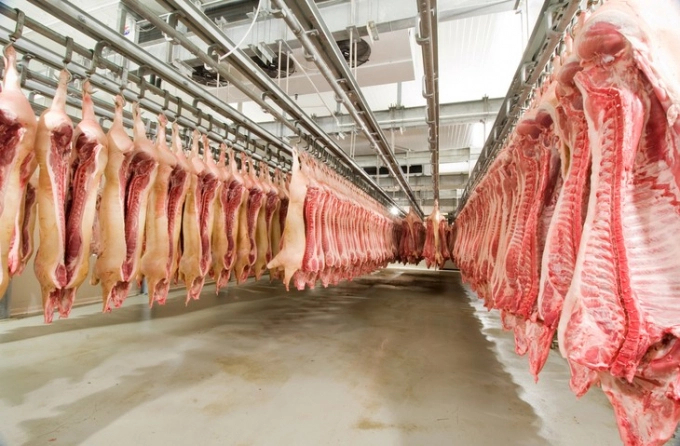November 24, 2025 | 23:44 GMT +7
November 24, 2025 | 23:44 GMT +7
Hotline: 0913.378.918
November 24, 2025 | 23:44 GMT +7
Hotline: 0913.378.918

Pork imports into China will drop in the last months of the year. Photo: TL.
According to data from the China Customs Administration, in the first 6 months of 2021, pork imports into China reached 2.3 million tons, which is worth US$6.58 billion, up by 8.5% in volume and 7.7% in value over the same period in 2020, constisting of imports mainly from Spain, Brazil, the United States, Denmark, Canada...
Spain is the largest pork supplier to China in the first 6 months of 2021, accounting for 32.2% of the total value of China's imported pork; Brazil comes second, accounting for 12.9%.
The data shows that the growth rate of China's meat imports is coming to a halt. The market analysis report of Rabobank, the US Department of Agriculture as well as the assessment of the pork market outlook by the AHDB, along with China's goal of 95% self-sufficiency in pork shows that China pork import capacity will slow down in 2021.
It is expected that in the last months of 2021, China may reduce pork imports because the domestic price of pork is lower than that of imported ones.
China is facing a crisis of excess pork since the beginning of 2021 due to excessive slaughtering and the weight of slaughtered pigs is 2-3 times higher than normal.
In the first six months of 2021, China's pork production increased by 36% year-on-year to about 27 million tons. The country's pig herd at the end of June 2021 increased by 30% year-on-year, reaching 439 million pigs.
Slaughter output in China reached 337.42 million pigs, up by 34.4% year-on-year. The sharp increase in production has put pressure on pork prices in China, causing huge losses for pig farmers.
China's National Development and Reform Commission (NDRC) intervened by buying large quantities of pork to prevent prices from falling further. The NDRC said it will enhance the role of national pork reserves in stabilizing pork output and prices.
Accordingly, a temporary additional reserve will be established to help the Chinese Government in regulating pork prices, by purchasing when the price is too low and selling when the supply of meat is tighten.
Translated by Nguyen Hai Long

(VAN) An Giang promotes supply-demand connections, standardizes quality and builds value chains, creating a foundation for sustainable bird’s nest development and aiming to expand exports.
/2025/11/24/5339-4-nongnghiep-075331.jpg)
(VAN) Recently, the conference on 'Sustainable Fisheries Linkage Chain - Tilapia for Export' took place in Tien Hai commune, Hung Yen province.
/2025/11/21/4309-2-153400_128.jpg)
(VAN) Green and low-emission rice is paving the way for Vietnamese rice to enter high-end markets, marking the beginning of a transformation journey toward greening and elevating the national rice brand.

(VAN) ‘Right to Win’ outlines a national action plan that shapes a new vision for Viet Nam’s agriculture in an era of renewal and global integration.

(VAN) Lam Dong’s farmed sturgeon output this year is expected to reach 2,300 tons, worth VND 450 billion, affirming the brand’s position on the market.

(VAN) A surge in Ukrainian egg exports, largely driven by soaring sales to the UK over the last few years, has notably pushed up egg prices on the domestic market.

(VAN) The price of Arabica Catimor coffee in Quang Tri is currently at VND 25,000–27,000/kg (fresh cherries), the highest level ever recorded